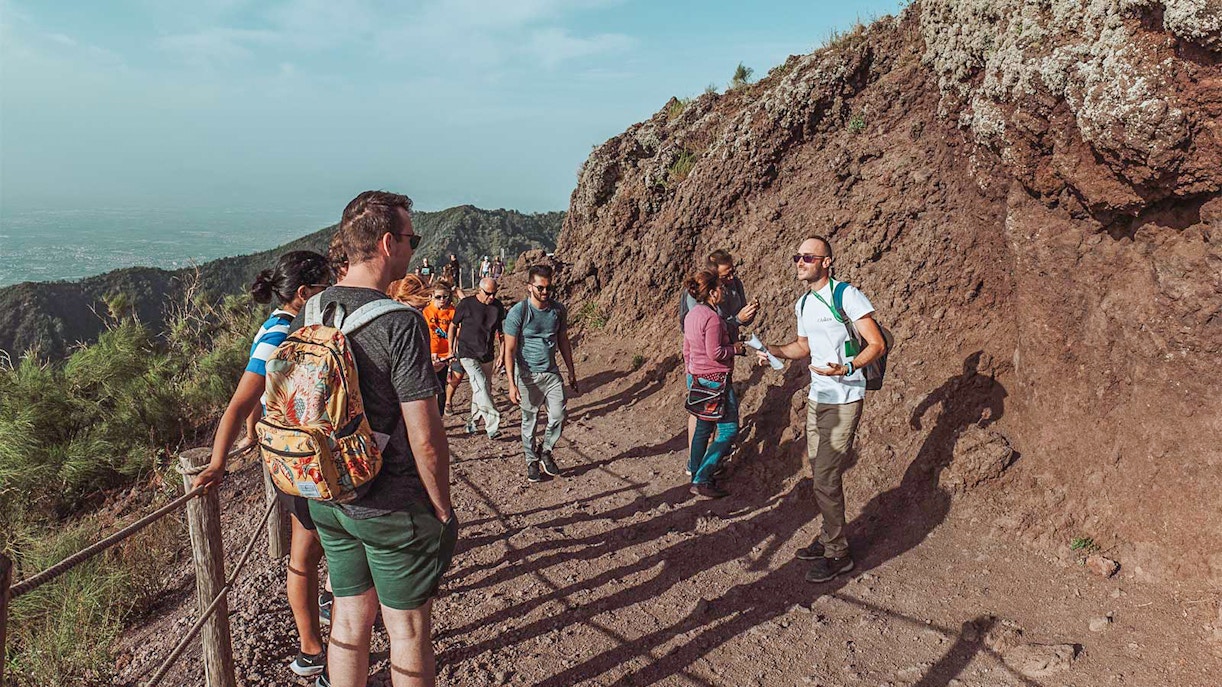Visit a UNESCO-listed ancient fishing town caught between a gulf and a volcano, and then climb that very volcanic mountain to peer at craters and panoramas.

⛰️Mount Vesuvius is part of a geological complex. Mount Somma is the older, larger structure considered the base or caldera of Vesuvius.
🌋Vesuvius is the younger, active cone that has grown within Somma over centuries. Eruptions originate from this cone, the last of which was in 1944!
🕳️A distinguishing feature of Vesuvius is the central crater at its summit, a large depression formed by past eruptions. Evidence of previous eruptions can be seen in the layers of volcanic ash, rock fragments, and debris blanketing the volcano's flanks.
Italian authorities have a well-established plan for monitoring volcanic activity and issuing warnings in case of an eruption. With proper precautions and adherence to safety guidelines, visiting Mount Vesuvius can be a safe and rewarding experience.
Access to the crater rim is often restricted based on volcanic activity levels. Marked trails are designated for ascending the volcano, and visitors must stay on these designated paths. However, before your visit, check the latest information on Vesuvius' activity level and any access restrictions.


Mount Vesuvius is about 13 km away from Herculaneum, located across the Bay of Naples. Herculaneum lies west of the volcano.
To explore both Herculaneum and Mount Vesuvius in one day, it's best to start early. Begin your day with a visit to Herculaneum, as the archaeological site typically takes about 1.5 to 2 hours to explore. Afterward, head to Mount Vesuvius, which takes about 30 minutes by car from Herculaneum. The hike up the volcano can take another 30 to 45 minutes, depending on your pace. This allows you to experience both locations without feeling rushed.
The best way to combine both activities is to book a guided tour or day trip that covers both locations. Many local tour operators offer packages that include transportation and a knowledgeable guide for both Herculaneum and Mount Vesuvius. This way, you can focus on enjoying the experience without worrying about logistics.
It would have been very difficult to wade through the layers of ash and debris spewed by Vesuvius, and lack of technological advancement in those days would have made rebuilding the town an impossible task. Further, the live burial of thousands of people may have deterred people from entering it, perhaps leading them to think of these sites more as burial grounds.
No, the ancient town of Herculaneum has no official residents. While Herculaneum lies in excavated ruins — and not even all of it has been fully excavated — the towns of Ercolano (formerly known as Resina) and Portici are built above it. This is also what makes excavating Herculaneum a challenging task, as present-day settlements will have to be demolished to gain access to the buried town.
Taking a tour of Vesuvius is highly recommended as visiting the volcano is sure to enhance your understanding of the terrain, tragedy, etc. Usually, both sites can be visited on the same day as they’re only 30 minutes away from each other by road.
It's definitely feasible to visit both in one day, especially if you're comfortable with a moderately busy itinerary. However, if you prefer a more relaxed pace, dedicating a full day to each site would allow you to immerse yourself fully in the history of Herculaneum and the natural beauty of Mount Vesuvius without feeling rushed.
Although people were not adept at reading Vesuvius’ clues, it was evident (in hindsight) that an eruption was imminent. Besides the earthquake of 62 AD, there were also frequent home repairs being conducted across Pompeii and Herculaneum — in fact, painters in Herculaneum abandoned repair work half-way through the eruption to take cover.













From Naples: Pompeii, Herculaneum & Vesuvius Day Trip
From Naples: Mount Vesuvius & Herculaneum or Pompeii Day Trip